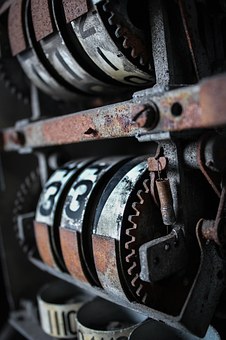Automating Things With Batch Files - Ideas That Work on Modern PCs Too!

Automating Things With Batch Files - Ideas That Work on Modern PCs Too!
If you are acquainted with MS-DOS at all, you'll remember that it's a command-driven OS that performs tasks you issue at the C:> prompt. The only means to get an early MS-DOS computer to do anything was to type a command at this prompt; and as you can imagine, it was a rather clumsy method to use a PC. But that's how large mainframe computers operated, and it was just carried over to early personal computers.
As an example, start up Microsoft's simple editor program, you'd have to enter the name of the drive where the program was located, the directory (they called a folder a "directory" back then) where the program was installed, and then the program name. So if Microsoft Edit was in a folder named "Programs" you could run the program by typing "C:>programs/edit.com". Only then could the program load up for use.
This is a small command, but just imagine when you had a program that was deeply nested within a series of folders. You would end up entering a command the width of your PC's screen, or even worse, long enough that the whole command would begin to wrap around on the following line! So imagine that you had to enter these long commands each time that you wanted to run a program. Yikes!

That's only one of the reasons why batch programs were so popular. Batch programs are small text documents with a *.bat suffix that consist of a string of such instructions, each on its own line. When run, they would perform each instruction without the user having to type every one of them. Go to our offsite backups link below to find out how you can use batch programs with the free "PersonalBackup" program to keep a month's worth of versions of your weekly (full) and daily (partial) archives.
After Windows was introduced, the need for typing instructions was basically eliminated, thanks to using the point-and-click (mouse) interface. But this did not quell the batch program fever which began under MS-DOS - and in a few small groups, batch programs are still as popular today as they were in the beginning.
Although you may use Windows XP, Vista or Windows 7, batch files can save you lots of effort by automating the launch of multiple programs and carrying out various tasks at the single click of a button. They don't need any heavy-duty background in programming and they don't have to be encrypted with some complicated, costly compiler. Batch files are plain text files, and you could make one for your personal use with Windows Notepad.
You could make a batch file which loads up your most-used websites all at once, for example, or you could make a batch file that loads your screen with the most necessary applications for the day. To do so only assumes a little knowledge about the locations of these applications.
Let's assume that every day we need to load up the Yahoo web browser, then run Microsoft Word, and then load up the calculator that comes with Windows. Rather than doing this manually, we can build a batch file to do it for us.
First, we would start up Notepad and type in the following:
START "http://www.yahoo.com"
START "c:/program files/microsoft office/office/winword.exe"
START "c:/windows/calc.exe"
We would next save these data into a file called "mytasks.bat" onto the Desktop for easy access. Every time we double-clicked on this file, the Yahoo website would load up, Microsoft Word would run, and the simple calculator would pop up.
Since we want these programs to run every day, we can create a shortcut to this batch file and then move the shortcut inside our personal computer's Startup folder. That way, these three programs would start every time we switch on the PC. If you want these programs to load minimized, you can enter the following into a batch program instead:
START "http://www.yahoo.com" /m
START "c:/program files/microsoft office/office/winword.exe" /m
START "c:/windows/calc.exe" /m
This would start all three programs as previously, however, the "/m" parameter would minimize them in order that they don't fill up your Desktop.
Other people have discovered many more creative and effective ways to use batch programs, however, the essential thing is that you know that they're a resource you may utilize to save a few seconds or minutes in carrying out important tasks. Again, see our offsite backups link about how to automate your backups with the free "PersonalBackup" application.

We've come a long way from MS-DOS, but batch files are still a valuable tool for automating tasks that everyone can utilize with no extensive programming knowledge whatsoever.
Best regards,
Bob Hosken
"Dr. Bob the CompuNerd"